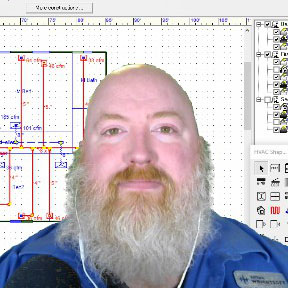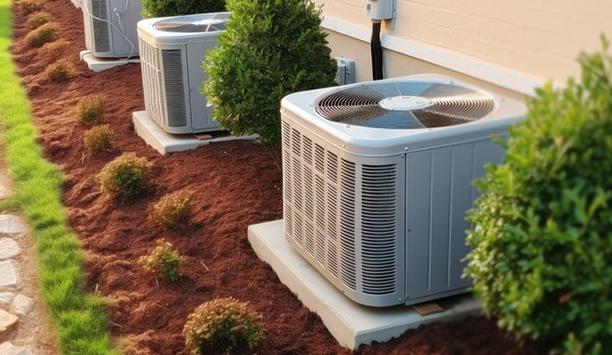Mobile systems are growing in popularity across the HVAC market, driven by convenience and changing demographics of the workforce. For younger employees, smart phones are almost an extension of their hands. As they enter the HVAC workforce, they are eager to embrace mobile systems.
However, the simplicity of mobile systems is also attractive to older workers, who may be less inclined to use a complex desktop computer system. In the case of mobile systems, “limitation leads to creativity,” says Alex Meaney, senior Wrightsoft trainer at MiTek Holdings. Stripping down functionality to make a system available on a smart phone also makes it particularly easy to use.
Utilising mobile systems
HVAC professionals use WrightSoft’s software products, including mobile systems, to translate a site’s heating, cooling and ventilation needs into system designs and product choices to address those needs. Mobile systems do not complete the total design process, but they provide a start. Meaney says mobile systems are a “gateway to those who are less technically savvy.”
Mobile systems are a “gateway to those who are less technically savvy”
In addition to providing Right-J Mobile load calculation software for mobile platforms, WrightSoft also offers full HVAC design and build software for desktops. WrightSoft’s software can capture information from a CAD drawing or PDF and then calculate elements such as load, air flow, pressure drops, friction, etc. to ensure system performance, while taking into consideration elements such as moisture and outdoor temperature. The software creates a ductwork configuration and provides a materials list for the installer.
The flagship Right-Suite Universal product is sold modularly so customers only pay for what they need. The simplified interface does not require CAD expertise. In addition, the company’s latest Right-CAD product offers a more traditional CAD experience.
Right-Mobile Consultant
Another WrightSoft mobile system is the Right-Mobile Consultant, an in-home selling tool that can compare systems and operating costs, create a proposal, and includes tools for pricing. All the products are certified by the Air Conditioning Contractors of America (ACCA) and are based on ANSI standards.
A feature of WrightSoft products is that they incorporate digitization of ACCA Manual J, which addresses load calculation. The software also incorporates expanded performance data, including proprietary engineering data provided by manufacturers, pre-loaded to enable users to recommend equipment based on ACCA Manual S, which directs residential equipment selection. The aggregated performance data provides value to WrightSoft’s OEM partners by allowing installers to automatically select equipment that complies with Manual S requirements by merely checking boxes in the software. The expanded data is more detailed and specific than Air-Conditioning, Heating, and Refrigeration Institute (AHRI) ratings, which are incorporated into some software systems but were never intended to be used by contractors to size equipment.
WrightSoft is part of MiTek Holdings, which also has HVAC-related subsidiaries M&M Manufacturing and Snappy, which provide metal ductwork. MiTek is owned by multinational conglomerate Berkshire Hathaway.
Easing entry into the HVAC market
Mobile systems can ease entry into the HVAC market of new, younger employees by providing instant access to expertise that older workers “keep in their heads” and had to learn over many years on the job. Helping to expand the labor pool is particularly timely as HVAC contractors have struggled to find enough employees.
Cloud-based systems are also increasing productivity of HVAC installers
Cloud-based systems are also increasing productivity of HVAC installers. Because information is now stored in the cloud, installers can enter information on a mobile product and then continue working on the same project on a desktop.
WrightSoft’s focus is on residential installations, although some professional engineers also use the software for commercial projects. The company does not track how their software is being used in the market. WrightSoft typically interacts with customers at the point of sale, again when the software is updated, and also for support and training.
Cloud technologies
WrightSoft does not manage customer data or have access to a customer’s files. “Being in the cloud enables us to better tie all our technologies together and to tie into other industry partners in the building space,” says Micah Dawson, Product Portfolio Manager, HVAC at MiTek USA. MiTek overall is well positioned to expand their cloud-based services and develop a broader cloud offering over time, he adds.
“There is a lot to know about HVAC design, and it requires a lot of input and analysis,” Dawson says. “People don’t realize they need software to help them.” HVAC systems are becoming more complex, which makes it harder for installers to rely on informal “rule of thumb” assumptions based on experience. “We as an industry have moved those assumptions, but some installers are not keeping up as things are becoming complex,” he adds.
The incremental benefits achievable by using software can make the difference in a company’s success or failure, says Dawson, citing the turnover of companies entering (and sadly, exiting) the HVAC industry as a reflection of the need. There is a lot at stake for smaller companies especially, and there are around 60,000 HVAC contracting businesses with four or less employees.
How software helps
A wrong calculation or bad design choice could wipe away the profitability on a single job; or perhaps worse, hamstrung profitability over time could cause a smaller company to die “by a thousand paper cuts,” Dawson says. “Software allows you to get the design right at the digital stage, where it doesn’t cost anything, so you can be sure of the equipment you are spending so much money on,” says Dawson.
Because of COVID-19, Meaney has shifted his training to online
Because of COVID-19, Meaney has shifted his training to online, and the company is investing to improve that training. “We have enhanced and broadened our training availability significantly,” he says. Among the benefits of online training is the ability to spread out course material into shorter sessions spread over a longer period – several two-hour sessions rather than all crammed into two long days. In any case, Meaney expects online training to continue to play a larger role in the post-COVID-19 world.
In general, the COVID-19 pandemic has increased the market focus on indoor air quality as we have all spent two months locked inside our houses. The benefit of using software to correctly design HVAC systems for the home will be more important than ever. Meaney predicts “the dam will break” after the quarantine ends as people look to improve their systems, not to mention catching up on routine maintenance.






































